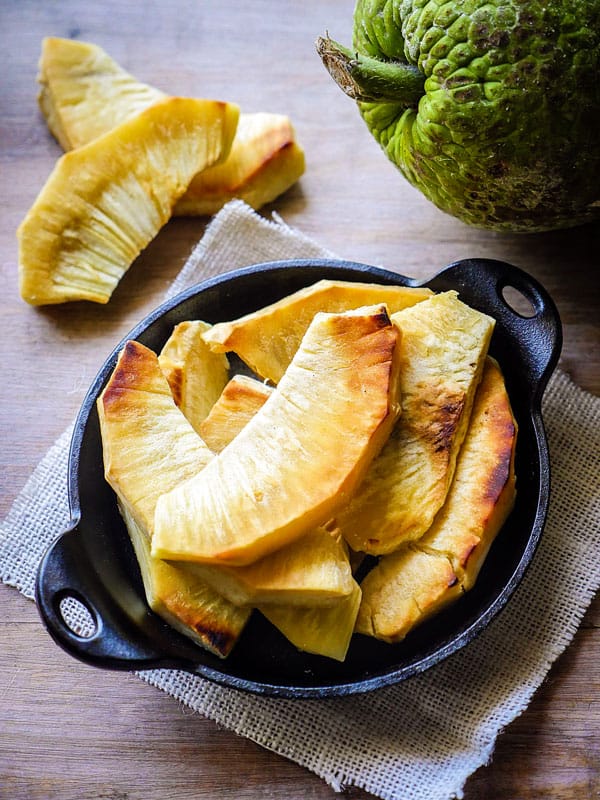Breadfruit: The Versatile Crop Transforming Lives and Boosting Economy in Africa
Breadfruit: The Versatile Crop Transforming Lives and Boosting Economy in Africa
Imagine a crop so versatile and transformative that it has the power to revolutionize lives, communities, and economies. Enter breadfruit, nature’s hidden gem that is setting Africa ablaze with its endless possibilities. From tackling hunger to bolstering economic growth, this humble fruit is taking center stage in the continent’s agricultural landscape. Get ready to be blown away as we delve into the extraordinary journey of breadfruit – an unsung hero unlocking Africa’s potential like never before!
Introduction to Breadfruit: What is it and why is it gaining attention?
Introduction to Breadfruit: What is it and why is it gaining attention?
Breadfruit, also known as Artocarpus altilis, is a tropical fruit that has been gaining attention in recent years due to its versatility, nutritional value, and potential for economic growth. Originating from the Pacific Islands, breadfruit has now spread to other parts of the world, including Africa.
Many people may not be familiar with this fruit, but it has been a staple food in many cultures for centuries. Its name comes from its starchy texture and taste similar to freshly baked bread when cooked. The tree on which breadfruit grows can reach up to 85 feet tall and produce hundreds of fruits each year.
What makes breadfruit stand out is its ability to grow abundantly in diverse climatic conditions. It can thrive in both tropical and subtropical regions, making it an ideal crop for countries struggling with issues such as food insecurity and climate change.
Nutritional Value of Breadfruit
Apart from being a versatile crop, breadfruit also offers numerous health benefits. It is high in dietary fiber and contains essential vitamins such as vitamin C, B6, and potassium. It is also gluten-free and low in calories compared to other starchy foods like potatoes or rice.
Moreover, breadfruit contains all nine essential amino acids required by the human body for proper growth and development. This makes it a valuable source of protein for vegetarians and vegans who may struggle to meet their daily protein requirements.
The History of Breadfruit in Africa: How and where did it originate?
The History of Breadfruit in Africa: How and where did it originate?
Breadfruit, also known as “the tree of a thousand uses”, has been a staple food in many African countries for centuries. The fruit, scientifically known as Artocarpus altilis, is native to the South Pacific islands but has found its way to various parts of the world through trade and exploration. In this section, we will delve into the fascinating history of breadfruit in Africa and explore how it became a vital part of the continent’s cuisine.
Origins in Polynesia
Breadfruit is believed to have originated in the Polynesian islands around 3,500 years ago. It was discovered by early Polynesian voyagers who traveled across vast distances on their canoes. These explorers brought back breadfruit trees from their journeys and cultivated them on their home islands. Over time, breadfruit became a significant part of their diet due to its starchy texture and versatility.
Introduction to Africa
In the late 1700s, British explorer Captain James Cook came across breadfruit during his voyage to Tahiti. He saw how this crop could potentially be used as a cheap food source for slaves working on plantations in Caribbean colonies such as Jamaica. With hopes of reducing costs and increasing profits for plantation owners, Cook decided to bring back breadfruit trees from Tahiti to the West Indies.
Nutritional Benefits of Breadfruit: Why is it considered a superfood?
Breadfruit, also known as “ulu” in Hawaii, is a tropical fruit that has been gaining popularity in recent years as a superfood. This versatile crop has been a staple food for many cultures around the world, particularly in Africa and the Pacific Islands. In this section, we will explore the nutritional benefits of breadfruit and discover why it is considered a superfood.
1. High in Nutrients
Breadfruit is packed with essential nutrients that are vital for our overall health. It is an excellent source of vitamins and minerals such as vitamin C, potassium, magnesium, and fiber. It also contains significant amounts of calcium, iron, zinc, and B vitamins. These nutrients are essential for maintaining healthy bones and muscles, boosting immunity, improving digestion and metabolism.
2. Rich in Antioxidants
Antioxidants are compounds that help protect our cells from damage caused by free radicals. They play a crucial role in preventing chronic diseases such as heart disease, cancer, and Alzheimer’s disease. Breadfruit is rich in antioxidants such as carotenoids (beta-carotene), flavonoids (lutein), anthocyanins (cyanidin), which give it its vibrant colors ranging from green to yellow to purple.
3.Rich Source of Carbohydrates
Breadfruit is an abundant source of complex carbohydrates that provide sustained energy throughout the day.
Economic Impact of Breadfruit in Africa: How has it transformed lives and boosted the economy?
The breadfruit, also known as the “tree of life,” has been a staple crop in many African countries for centuries. Its impact on the economy and livelihoods of people in these regions cannot be overstated. In recent years, with increasing attention and investment in breadfruit production, its economic importance has grown even more.
One of the primary ways that breadfruit has transformed lives in Africa is through food security. In countries where it is widely cultivated, such as Ghana, Nigeria, and Cameroon, it serves as a key source of nutrition for millions of people. Breadfruit is rich in carbohydrates and essential vitamins and minerals, making it an important food source for both rural and urban populations. Its versatility allows it to be cooked in various ways – boiled, fried, baked – providing much-needed dietary diversity for communities.
Moreover, breadfruit trees are highly productive and can often bear fruit year-round. This makes them a reliable source of income for farmers who can sell their surplus produce at local markets or to processors who turn them into value-added products like flour or chips. The consistent demand for breadfruit creates employment opportunities along the value chain – from cultivation to processing to marketing – leading to increased incomes for individuals and households.
Aside from its direct impact on food security and incomes, breadfruit has also contributed significantly to job creation and entrepreneurship development in Africa.
Sustainable Farming Practices for Breadfruit: How is it grown and harvested?
Sustainable farming practices are essential for the growth and development of any crop, including breadfruit. By adopting sustainable methods, farmers can ensure that their breadfruit trees thrive in a healthy and environmentally-friendly manner while also yielding high-quality fruits. In this section, we will explore the various sustainable farming practices used for growing and harvesting breadfruit.
1. Soil Management:
The foundation of any successful crop is healthy soil. Breadfruit trees require well-drained, deep, and nutrient-rich soil to grow. Farmers use techniques such as composting and mulching to improve soil fertility and structure. Composting involves decomposing organic matter such as kitchen scraps, manure, leaves, and grass clippings to create a nutrient-dense fertilizer for the trees. Mulching involves covering the soil with a layer of organic material like leaves or straw to retain moisture and prevent weed growth.
2. Crop Rotation:
Crop rotation is a common practice among sustainable farmers as it helps maintain soil health by preventing nutrient depletion and controlling pests and diseases. Breadfruit trees are usually intercropped with other crops such as legumes or vegetables on the same piece of land. This approach not only increases biodiversity but also maximizes land use efficiency.
Culinary Uses of Breadfruit: Popular dishes and recipes from different African countries
Breadfruit, a starchy fruit native to the Pacific Islands, has been gaining popularity in Africa as a versatile and nutritious crop. Besides its economic benefits, breadfruit also holds cultural significance in many African countries, where it is widely used in traditional cuisines.
In this section, we will explore some of the popular dishes and recipes from different African countries that showcase the culinary uses of breadfruit.
1. Nigeria – Breadfruit Fufu:
Fufu is a staple food in many West African countries, including Nigeria. Traditionally made with cassava or yams, fufu can also be prepared using breadfruit. The fruit is boiled and mashed into a smooth dough-like consistency before being formed into balls or served as an accompaniment to soups and stews.
2. Cameroon – Ndolé:
Ndolé is a famous Cameroonian dish that features steamed breadfruit slices topped with a spicy peanut sauce. The ripe fruit is sliced and cooked until tender before being smothered with a flavorful blend of onions, garlic, ginger, tomatoes, peanuts, and spices. This hearty dish is often served with rice or plantains.
3. Ghana – Etew (Breadfruit Porridge):
Etew is a delicious porridge made from mashed boiled breadfruit mixed with coconut milk and spices like cinnamon and nutmeg. This sweet treat is commonly eaten for breakfast or as an evening snack in Ghana.








Comments are closed.